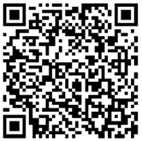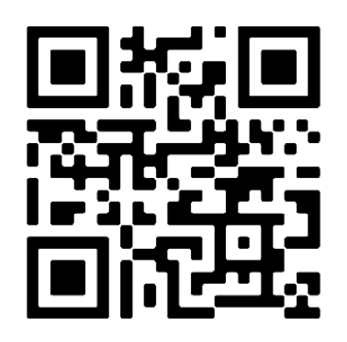Going Home After Birth: Discharge Instructions
Below are general topics we want you to know about when you go home. Please note, not everything will apply to you. Ask a member of your care team if you have any questions.
Perineal Care (Laceration, Tears, Episiotomy, Hemorrhoids)
-
To relieve perineal pain, continue to use your peri-bottle and take pain medications as discussed with your health care providers.
-
You can apply the following products for pain relief: witch hazel / Tucks pads, benzocaine / dermoplast spray, hemorrhoid cream, and sitz baths.
Vaginal Discharge (Lochia) and After-birth pain
-
The bleeding you have in the postpartum period is called lochia.
-
After-pains are cramping or contraction-like pains in the abdomen (belly area). They happen after delivery because your uterus (womb) is shrinking. These pains are normal.
Sex after Giving Birth and Birth Control (Contraception)
-
You may be able to become pregnant right away after delivery even if you have not yet had your period (menstrual cycle) since giving birth.
-
Relying on breastfeeding as birth control is not recommended. It is important to talk to your provider about your birth control options if you wish to avoid pregnancy.
Cesarean Incision Care
-
Keep your incision clean and dry.
-
If white steri-strips are on your incision, you can take them off in the shower. Do this by the end of the first week after giving birth unless instructed by your healthcare provider to wait until your office visit.
Diet / Nutrition
Bowel Habits
Rest and Sleep
-
It is very important to get as much rest as you can after your baby is born. It is easy to become exhausted and frustrated, especially in the early days after birth. Whenever possible, sleep when the baby sleeps, even if this means short naps throughout the day. If sleep is not possible, relaxation exercises can be helpful.
Breast Care If You Are Not Breastfeeding
-
If you are not breastfeeding, wear a supportive, snug fitting bra (sports bra). If your breasts become engorged, apply cold compresses every 3 to 4 hours for about 15-20 minutes.
-
To avoid stimulating milk production:
-
Do not express or pump your milk
-
Stand in the shower with your back to the water flow so that hot water does not directly hit your breasts / chest.
-
Avoid nipple stimulation.
-
If engorgement does not improve within 1-2 days, you notice pain in the breast(s), or you develop a fever, contact your healthcare provider.
Discomfort and Pain Relief
-
If you have any discomfort or pain during this period, you can take ibuprofen (Motrin) and acetaminophen (Tylenol) as discussed with your provider.
-
Talk to your provider if you have questions or if the pain is not getting better.
-
Always check with your provider or other health care provider before taking any medications while breastfeeding.
Medication Side Effects
If you are taking any of the following medications at home, please be aware of these possible side effects. Please note you might not be taking all the medications listed. Ask a care team if you have any questions.
All medications we give you are safe for breastfeeding.
|
Medication
|
Use
|
Possible Common Side Effects
|
|
Ibuprofen (Motrin)
**Do not take more than 2.4 grams or 2400mg in a 24 hour period
|
Pain Relief
|
-
Dizziness
-
Bruising
-
Heartburn
-
Stomach upset
|
|
Acetaminophen (Tylenol)
**Do not take more than 4 grams or 4000mg in a 24 hour period
|
Pain Relief
|
|
|
Oxycodone (Percodan, OxyContin)
(opioid pain medications)
|
Pain Relief
|
-
Constipation
-
Nausea
-
Drowsiness
|
|
Enoxaparin (Lovenox)
|
Anticoagulant (Blood thinner)
|
|
Please Note: This is not a complete list of side effects. Other side effects may happen.
POST BIRTH Warning Signs
Although most women who give birth recover without problems, any woman can have complications after the birth of a baby. Learning to recognize these warning signs and knowing what to do can save your life.
The Association of Women’s Health Obstetric and Neonatal Nurses (AWHONN) has created the POST BIRTH warning signs as a way to remember the things to look out for during your postpartum period.
Call your provider or go to the nearest emergency room if you have one of the following:
|
P
|
Pain in your chest: May mean you have a blood clot in your lung or a heart problem.
|
|
O
|
Obstructed breathing or shortness of breath: May mean you have a blood clot in your lung or a heart problem.
|
|
S
|
Seizures: May mean you have eclampsia. Eclampsia is a condition that causes seizures in people with pre-eclampsia (high blood pressure).
|
|
T
|
Thoughts of hurting yourself or your baby: May mean you have postpartum depression.
|
|
B
|
Bleeding that is soaking through one pad / hour, or blood clots the size of an egg or bigger: May mean you are having a postpartum hemorrhage.
|
|
I
|
Incision that is not healing: May mean you have an infection.
|
|
R
|
Red or swollen leg that is painful or warm to touch: May mean you have a blood clot in your leg.
|
|
T
|
Temperature of 100.4 °F or higher: May mean you have an infection.
|
|
H
|
Headache that does not improve, even after taking medicine, or a bad headache with vision changes: May mean you have high blood pressure or postpartum preeclampsia.
|
|
Adapted from: Association of Women’s Health, Obstetric and Neonatal Nurses (AWHONN), 2023. Save your Life POST-BIRTH Warning Signs Handout
Postpartum Depression
Depression/ Suicidal or Homicidal thoughts/ Inability to Cope
-
Postpartum depression (PPD) is a type of depression that occurs after childbirth. PPD can occur as early as one week and up to one year after giving birth.
-
Signs of Postpartum Depression include:
-
Thinking of hurting yourself or your baby
-
Feeling out of control and/or unable to care for self or baby
-
Feeling depressed or sad most of the day every day
-
Having trouble sleeping or sleeping too much
-
Having trouble bonding with your baby
-
Call 911 or go to the nearest emergency room if you feel you might harm yourself or your baby.
-
Call your healthcare provider right away for other signs of depression (sadness, withdrawn, difficulty coping with parenting).
|
|
Postpartum Depression Support Resources
Telephone Support
For over the phone support, call or text one of the following:
|
|
In-Person Support
For in-person support and other treatment options please call:
|
NYU Langone Health is not affiliated with the in-person resources listed below. We are not responsible for the information provided by these organizations.
-
The Motherhood Center
-
Call 212.335.0034 for more information or visit their website at, www.themotherhoodcenter.com
-
They are located at: 205 Lexington Ave, 10th Floor, NY, NY 10016
-
The Seleni Institute
-
Call 212.939.7200 for more information or visit their website at www.seleni.org
-
They are located at: 207 East 94th St, NY, NY 10128
|
|
Additional Resources
-
Postpartum Resource Center of New York: postpartumny.org
-
Postpartum Support International: http://www.postpartum.net/
-
Speak with your healthcare provider if you have any questions and to also let them know if you are experiencing any signs of postpartum depression or anxiety.
|
Your Follow-up Appointment
Schedule a follow-up visit with your provider in 2–6 weeks (or sooner if needed, or as instructed by your provider).
Support at Home
-
It is important that you can identify someone that can help you after you go home. This could be a partner, family or friend.
-
Below is a list of things your friends and family can help you with once you are home:
Discharge Phone Call
You will get a call or text message from a nurse within the first 3 days. They will ask about your transition home and answer any questions or concerns you may have.
New York State Birth Equity Project
We are working the Department of Health to ensure safe and equitable care to all birthing people in New York State regardless of race, ethnicity, gender, or language. We are requesting feedback from you to help us give the best care that is tailored to your needs. The New York State Department of Health had created a survey for you to give your input. It should take you just a few minutes. It is confidential and anonymous. The survey answers go directly to the Department of Health, and we will not see any one person’s responses.
You can access the survey on your MyWall bedside tablet or using your smartphone:

Virtual Lactation Consultation
-
Cost: Lactation Consultation visits are usually covered by most insurance plans. Check with your insurance to confirm.
-
A 1-hour online session (video visit), with a lactation consultant. They will help you with breastfeeding and answer your questions. You will get a personalized care plan to help you reach your breastfeeding goals.
-
How to access: Use your NYU Langone Health MyChart account. If you do not have one, you can create it. Download the NYU Langone Health app to your mobile device.
-
To schedule: Email [email protected] with the subject “Lactation Consultation Request.” Include in the email your full name and phone number and baby’s name and your baby’s date of birth. You can also self-register through MyChart after discharge.
|
NYU Langone Health Resources After Discharge
We are always here for you, even after you go home!
Scan the QR code to learn more about classes and resources from the NYU Langone Health Perinatal Education and Lactation:
-
Scan the QR Code: Select “I delivered” from the category drop-down menu
-
Choose as many classes as you would like to take. If you have not taken any classes with the NYU Langone Health Perinatal Education and Lactation in the past, you will be asked to create a profile. If you have taken classes, you will be asked to log in.
-
Enter HEREFORYOU in the Discount Code box on the registration page. All discounts will be applied at check out.

Enjoy your classes. We are here for you always!
For more information email [email protected] or go to nyubaby.org
|
©2025 NYU Langone Health. All rights reserved. Reviewed for health literacy. This information is not intended as a substitute for professional medical care. Always follow your health care provider's instructions.